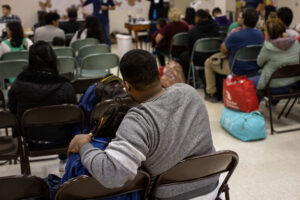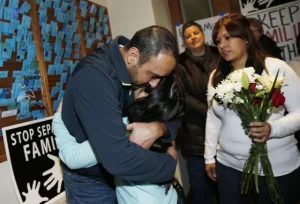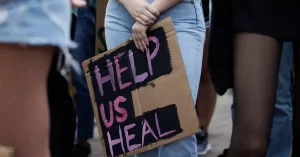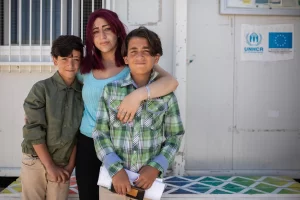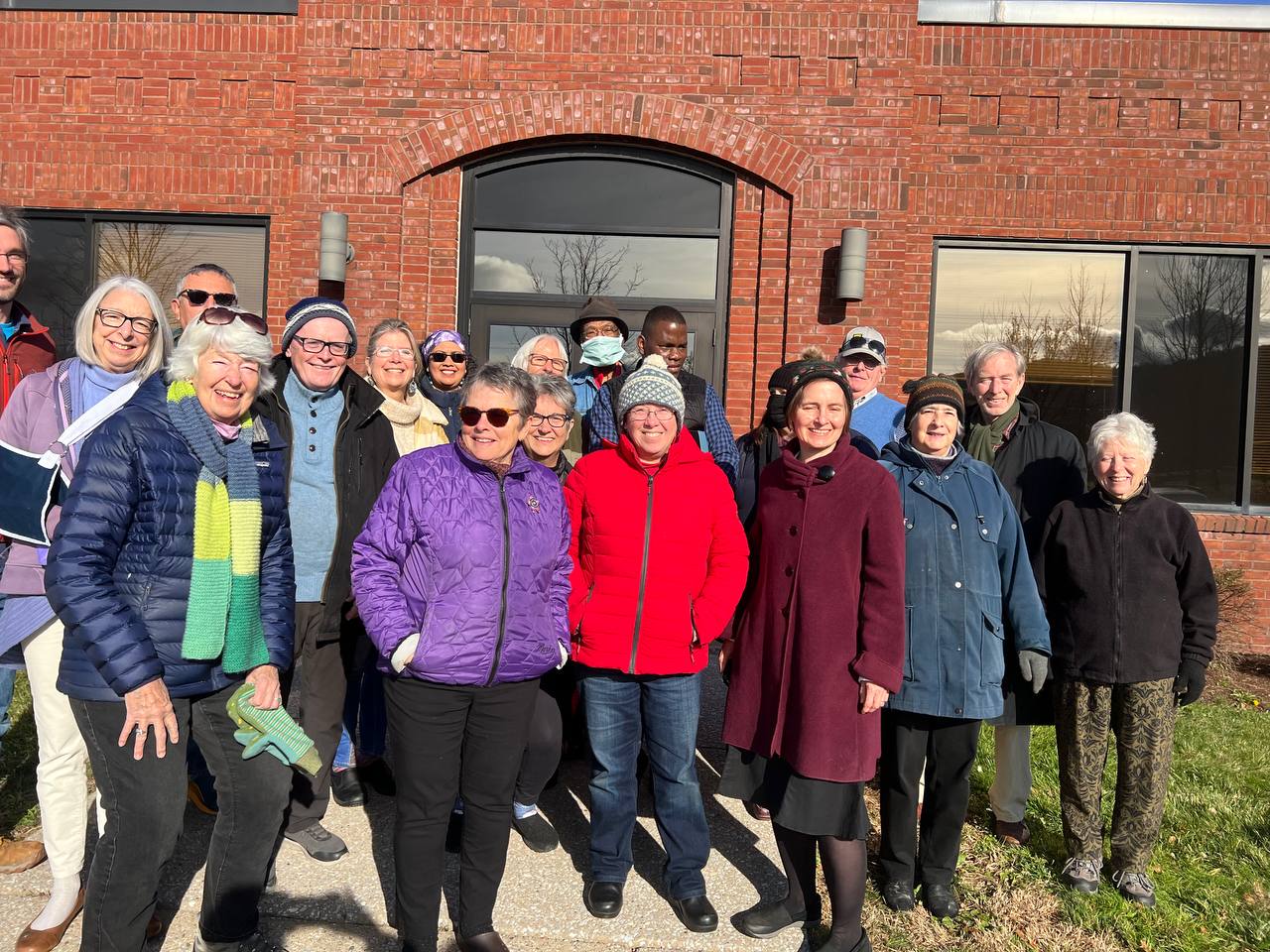A STEP-BY-STEP GUIDE TO THE U.S. IMMIGRATION PROCESS

Congratulations on deciding to immigrate to USA
Before you begin your immigration journey, you’ll need to understand what the process involves. To permanently move to the United States you must meet certain requirements, pay government fees, and have your application approved by the U.S. government. That can be complicated and expensive, so it’s important to know what lies ahead.
Immigrant vs. Nonimmigrant Visas
To immigrate to the United States means to relocate permanently by obtaining a green card (officially known as an “immigrant visa” or “lawful permanent residence”). A green card allows unrestricted employment and can be renewed indefinitely. It also provides a pathway to U.S. citizenship.
Not everyone is eligible for a green card, and applying for one can be expensive and time-consuming. Many people instead use temporary visas to visit, work, or study in the United States. Such visas (officially called “nonimmigrant visas”) are often renewable and good for multiple visits, which might allow you to live in the United States for several years.
This guide focuses on the options for permanent immigration. Remember, though, that many people start out on temporary visas (such as F-1 or J-1 student visas) before going on to gain green cards. If you don’t currently qualify for an immigrant visa, think about whether a temporary visa might help you achieve your goals. Boundless + RapidVisa can help you complete your student or exchange visa application, prepare for your visa interview, and answer any immigration questions you may have. Learn more about what we do to help.
Are you ready to immigrate? Find out if you’re eligible for a marriage-based green card or a family-based green card, or learn more about how Boundless can help you navigate the immigration process.
Different Types of Immigrant Visas
To immigrate to the United States, you’ll need to figure out which type of green card you’re eligible for. You’ll likely only be able to immigrate if you qualify for one of the following.
Types of U.S. Visas
- Family-based green cards
- Employment-based green cards
- Humanitarian green cards
- Diversity lottery green cards
- Longtime-resident green cards
- Other green cards
This guide focuses on family and employment-based green cards since those are the options used by most immigrants. Let’s take a closer look.
Most green cards are issued to the family members of current U.S. citizens and green card holders. Eligible family members include spouses, widows/widowers, children, parents, and siblings, but the rules vary depending on whether the sponsor is a U.S. citizen or a green card holder, and also on how closely related the immigrant is to the sponsor. You can read more about the requirements for a family-based green card below.
Many immigrants come to the United States using employment-based green cards, which are issued in five different categories based on the skills or other benefits you bring to the country.
The first four categories — called EB-1, EB-2, EB-3, and EB-4 — focus on the skills you bring as an employee. In some cases you’ll need a U.S. employer to sponsor your application; in others, you’ll have to demonstrate extraordinary abilities or specialized training. You can read more about these requirements below.
The EB-5 green card is a little different: it’s issued to investors who spend between $500,000 and $1 million creating jobs in American communities. The details vary depending on your home country, so seek legal and financial advice if it’s a route you want to explore.
An employment-based green card shouldn’t be confused with a work permit (officially called an “Employment Authorization Document”), which is a separate document granting marriage-based green card applicants the right to work in the United States.
Green cards are sometimes issued to refugees and asylees, as well as to victims of human trafficking, abuse, and crime. Getting a visa as a member of one of these groups can be complicated, so speak to a lawyer if you think you might be eligible. Our introductory guide to green cards has more details about humanitarian visas.
The United States runs a “green card lottery” that randomly awards immigrant visas for up to 50,000 people each year. Only applicants from countries with low rates of immigration to the United States are eligible to apply. Check the Boundless guide to the diversity lottery for more information.
Green cards can be issued to individuals who have physically lived in the United States, either lawfully or unlawfully, since January 1, 1972. They must have entered the United States before that date and not have left the United States since arriving.
The U.S. government issues many other types of green cards, including ones for “special immigrants” such as media professionals, religious workers, Afghanistan and Iraq nationals who have assisted the U.S. government, and employees of international organizations. In some situations, green cards are also available to Cuban citizens and American Indians born in Canada.
Boundless offers unlimited support from our team of immigration experts, so you can apply with confidence and focus on what’s important, your life in the U.S. Learn more.
Green Card Requirements
For most green card applications, you’ll need to pass:
- a background check, for which you may have to submit police reports from places where you’ve previously lived and answer questions about past convictions.
- a medical exam, during which you’ll be asked questions about your mental health, use of drugs and alcohol, and history of communicable diseases.
You’ll also have requirements based on the specific visa for which you’re applying. Let’s take a look at the requirements for family-based and employment-based green cards:
The main requirement for a family-based green card is that you be closely related to a green card holder or permanent resident.
You’ll also need an affidavit of financial support from someone who’ll ensure you don’t fall into poverty after arriving in the United States. In most cases, your sponsoring relative will also be your financial sponsor, but if necessary a separate “joint sponsor” can pledge to support you. Either way, your financial sponsor must have a household income that’s at least 125% of the federal poverty guidelines.
If the sponsoring relative is a U.S. citizen and you are their spouse, widow/widower, unmarried child aged 21 or younger, or parent (if the U.S. citizen is aged 21 or older), then you can apply for a green card as an immediate relative. That’s a good thing! It means a green card will be available to you immediately, so you won’t have to wait in line.
If your sponsoring relative is a U.S. citizen and you aren’t one of the relations listed above, or if your sponsoring relative is a green card holder, you’ll apply as a “family preference” immigrant in one of the following categories:
First preference (F1): unmarried children (aged 21 or older) of U.S. citizens
Second preference (F2A): spouses and unmarried children (aged under 21) of green card holders
Second preference (F2B): unmarried children (aged 21 or older) of green card holders
Third preference (F3): married sons and daughters of U.S. citizens
Fourth preference (F4): siblings of U.S. citizens (if the U.S. citizen is aged 21 or older).
There’s no cap on visas for immediate relatives, but only a limited number of family preference green cards are issued each year, so you’ll have to wait for one to become available. Your preference category determines how long you’ll wait, ranging from a year or two for F1 applicants and up to a decade or longer for F4 applicants. Check the visa bulletin for up-to-date information.
To minimize your wait time for a green card, it’s important to get the details right. Let Boundless be your immigration go-to, guaranteed approval or your money back. Learn more about what Boundless can do to help.
Employment-based green cards typically require that a specific U.S. employer sponsor you, or evidence that you possess extraordinary skills and training in your chosen field.
There are five categories for employment green cards:
First preference (EB-1): for people with extraordinary skills (shown through national or international acclaim); academic researchers; and executives with multinational companies.
Second preference (EB-2): for people with advanced degrees; exceptional abilities in the sciences, arts, or business; or whose admittance is in the national interest.
Third preference (EB-3): for skilled workers with at least 2 years of training or work experience; professionals (those whose job requires a US college bachelor’s degree or foreign equivalent); and unskilled workers (jobs that require less than 2 years of work experience).
Fourth preference (EB-4): for “special immigrants” such as religious workers, military translators, and the employees of international organizations
Fifth preference (EB-5): for investors who deploy at least $500,000 into job-creating ventures in the United States
To qualify for an employment-based green card, you’ll have to meet the criteria for the specific category under which you’re applying.
For EB-1 and EB-2 visas, you’ll have to properly document your skills, training, and any national or international recognition you’ve received. That’s a complicated process, so seek legal counsel if you think you might be eligible.
For EB-2, EB-3, and EB-4 green cards you’ll typically need an employer to sponsor your application. For EB-2 and EB-3 visas, you’ll also usually need labor certification showing that there are no American workers able to do the work for which you’re being hired. Your employer will normally handle that process, and provide any legal guidance you need.
For EB-5 green cards, there are complex rules governing the investments needed to qualify. Be sure to seek proper financial and legal advice if you want to take this path.
Remember, it’s also possible to live and work in the United States using a family-based or marriage green card, and you’ll often be able to begin working before your visa is finalized. Boundless can help you figure out if you’re eligible for a family green card, and can make the whole process quicker and easier.
Immigrant Visa Costs
The total cost of applying for a family-based green card is approximately $3005 for an applicant living in the United States or around $1540 for an applicant living abroad. This includes mandatory U.S. government fees, which are nonrefundable, plus the typical cost of the required medical examination.
The total cost of applying for an employment-based green card varies depending on the category under which you’re applying. You can expect to pay $2330 for your green card application, but your employer could face additional filing fees and labor certification costs, potentially driving the total cost to around $10,000.
In either case, your filing fees are nonrefundable, so it’s important to get your application right the first time.
Important:
Immigrant visa costs could increase significantly as soon as summer 2023. USCIS recently proposed to increase filing fees for nearly every visa category, including family-based green cards and employment-based green cards. The new fees are not yet in effect, but Boundless is monitoring the situation closely. Be sure to check out our USCIS fees guide to see the expected costs and any important updates.
Not sure what costs to expect? Boundless’ USCIS fee calculator can help determine the exact government fees for your application. We also help you pay your costs in installments, so you can get started now and pay later. Answer our 5-minute questionnaire to get started.
Applying for an Immigrant Visa
The application process you’ll follow will depend on where you currently live:
- Living in the United States: If you’re already in the United States, you’ll often be able to file your application and remain in the country while it’s being processed. This is called Adjustment of Status (AOS)
- Living outside the United States: If you’re currently outside the United States, you’ll usually file your green card application from your home country, and remain there while it’s processed by your local U.S. embassy or consulate. This is called consular processing.
There are pros and cons to both pathways, so it’s worth making sure you understand the difference between Adjustment of Status and consular processing. In either case, though, your green card application process will typically follow the same basic steps:
STEP 1: Your sponsor will file a petition with the U.S. authorities to start the immigration process. For family-based green cards this will be Form I-130, which establishes your relationship to the sponsoring relative. For employment-based green cards it will be Form I-140, which requests an employment-based green card on your behalf.
Important:
In some cases you can file your green card application concurrently with your initial petition, making the whole process more streamlined. Read more about concurrent filing to check if it could help you gain a green card more quickly.
STEP 2: U.S. Citizenship and Immigration Services (USCIS) will review and hopefully approve your petition. Once this is done, you will file your actual green card application, unless you already did so through concurrent filing, using Form I-485 to apply from inside the United States or Form DS-260 to apply from outside the United States. For family-based green cards, your sponsor will also submit Form I-864, pledging to support you financially.
STEP 3: If you’re applying from inside the United States, USCIS will process your application and mail you the details for an appointment to take your biometrics. If you’re applying from outside the United States, your application will be processed by your local consulate, and you’ll get your biometrics taken as part of your consular interview. In both cases, you’ll also need to get a medical exam as part of the application process.
STEP 4: Both application processes require an in-person interview. Once your application is processed, you will be sent a notice with the date and time at which you must attend an interview at either a USCIS office (if applying in the United States) or a U.S. consulate (if applying outside the United States).
STEP 5: After the interview, you’ll be told whether your application has been approved. If you applied from inside the United States, your green card will be mailed to you. If you applied via consular processing, your passport will be returned with a visa allowing you to travel to the United States; once you arrive, your green card will be mailed to your U.S. address.
The application process varies for other types of green cards, such as the diversity lottery, humanitarian, and longtime-residence green cards. More detailed information can be found on the USCIS website.
Boundless will stay with you from your initial petition to your final interview. Along the way, you’ll save thousands of dollars on legal fees while working with an experienced, independent immigration attorney who will answer all your questions and review your application materials. Get started today!
Immigrant Visa Wait Times
IMPORTANT UPDATE (May 20, 2024):
The April 2023 Visa Bulletin brought a significant change to the F-2A family-based category, which covers spouses and unmarried children under 21 of U.S. Green Card holders. The category is facing a backlog of cases, resulting in the “Final Action Dates” for F-2A applications no longer being current. “Final Action Dates” pertain to applications with priority dates that have reached the front of the line and can be processed. Nevertheless, the “Dates for Filing” for the F-2A category are still current, allowing applicants to file their green card applications. However, these applications will remain unadjudicated until their priority dates become current. Mexican applicants’ “Final Action Date” or priority date has retrogressed to November 1, 2018, and for all other applicants, it has retrogressed to September 8, 2020. This change will likely result in significantly longer wait times for green cards in the F-2A category. We will closely monitor this development and provide updates in our monthly Visa Bulletin report.
How long it takes to get a green card can vary significantly depending on the specifics of your case.
If you’re applying for a marriage green card, you can expect to get your green card within – months if you’re married to a U.S. citizen, or within – months if you’re married to a green card holder. For other family green cards, the wait time can be significantly longer. Check the visa bulletin for the most up-to-date details.
If you’re applying for an employment-based green card, your expected wait will depend on the EB category you’re using. Historically, USCIS has processed employment-based petitions in less than a month, and employment-based green card applications in less than a year, but check the visa bulletin for the latest details. Remember that your employer might be able to use premium processing to fast-track your visa application.
One way to keep your processing time to a minimum is to ensure you file your application and supporting documents correctly on your first try. With Boundless, you’ll get help filling out every form and the peace of mind of knowing that an independent attorney has reviewed all your forms and supporting documents. Answer our 5-minute questionnaire to get started.
What Happens Next?
Congratulations on becoming a green card holder! After all the hard work, you are now free to live and work wherever you like across the United States. You also have a clear pathway to eventual U.S. citizenship.
Your physical green card will be mailed to the U.S. address you put on your application. This can take up to 3 months, but you are allowed to remain in the United States and to work for U.S. employers in the meantime.
In some cases, such as if you obtained your green card through marriage but have been married less than 2 years, you’ll be issued a conditional green card. This means you will have to meet certain conditions and file Form I-751 to apply for an unconditional green card after two years of living in the United States. Make sure you don’t forget, since your green card could be revoked if you do.
An unconditional green card has to be renewed every 10 years, but there’s no limit on the number of times you can renew it. It’s possible to have your green card revoked if you spend too long outside the United States, or if you break the law, though.
Between 3 and 5 years after receiving your green card, you’ll become eligible for U.S. citizenship – the final step in many immigrants’ journeys. There’s no obligation to become a citizen, but if it’s something you want to explore, start planning now. You’ll need to meet requirements such as filing and paying your taxes, avoiding criminal convictions, and learning about U.S. history and society. See our detailed guide to naturalization requirements to learn more.
How to Avoid Common Problems and Pitfalls
Watch out for the “90-day rule”. If you plan to file a green card application, you need to be careful not to misrepresent your intentions when you first arrive in the United States. USCIS officials will closely scrutinize AOS applications filed within 90 days of entering the United States on a nonimmigrant visa.
Be careful with past visa violations. Overstays and unlawful presence in the United States can complicate green card applications, or lead to lengthy bans on reentering the country. It’s sometimes possible to obtain a waiver of these penalties, so consult a lawyer if you think this might affect your application.
Don’t fall for immigration scams. Unfortunately, there are plenty of scammers who target immigrants by posing as government officials or immigration lawyers. Use common sense, and report any suspected immigration scams to the appropriate authorities.
Stay alert to changes to the immigration process. The immigration system is always changing, so follow Boundless on Facebook and Twitter, or read the Boundless blog to get regular updates on the policy shifts that could impact your immigration journey.
Learn about more pitfalls to avoid here.
U.S. Immigration FAQs
What is “legal immigration”?
Legal immigration is the process by which an individual from one country enters another legally, following the rules and regulations set forth by that foreign country. A person who immigrates to a new country may be granted permanent residency, temporary residency, or citizenship status depending upon their situation.What rights do immigrants have in the United States?What are the consequences of entering the U.S. without a visa or green card?
Why does the U.S. have a lottery for diversity visas?
What are “sanctuary cities”?What is the role of the states in immigration policy?
Boundless guides
Related Information
How To Get A Green Card Through Marriage
How To Ace Your Green Card Interview
Immigrating to the U.S. from Canada
Immigrating to the U.S. from Mexico
Immigrating to the U.S. from Philippines
Immigrating to the U.S. from India
Immigrating to the U.S. from Pakistan
Immigrating to the U.S. from Nigeria
Immigrating to the U.S. from Kenya
Immigrating to the U.S. from Jamaica
Credit:: Boundless
Author: Bagombeka Job








